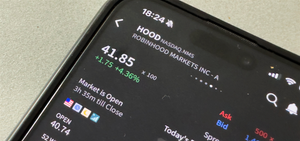The "Pharmacy Automation Market - Focused Insights 2021-2030" report has been added to ResearchAndMarkets.com's offering.
The Pharmacy Automation Market was valued at USD 6.16 billion in 2024, and is projected to reach USD 9.48 billion by 2030, rising at a CAGR of 7.45%.
The global pharmacy automation market is set to grow due to growing hospital digitization & EHR integration and a growing focus on operational efficiency & cost reduction.
KEY TAKEAWAYS
- By Component: In 2024, the hardware segment accounted for over 61% of the global market share, making it the largest category within the global pharmacy automation market.
- By Product Type: The automated medication dispensing systems segment accounted for the largest market share, also the segment is expected to grow at the fastest CAGR of 8% during the forecast period.
- By Facility Type: In 2024, the large-scale pharmacies segment accounted for the largest global pharmacy automation market share.
- By Distribution Model: The decentralized systems segment is expected to register the fastest CAGR and an absolute growth of 55.29% during the forecast period.
- By End-Users: In 2024, the hospital pharmacies segment accounted for the largest market share.
- By Geography: North America dominates the pharmacy automation market with the largest share of over 38%, and the APAC region shows the highest growth of 9.03% during the forecast period.
PHARMACY AUTOMATION MARKET TRENDS & DRIVERS
Expansion of Telepharmacy & Remote Patient Management Services
The rapid digitalization of healthcare has accelerated the adoption of telepharmacy, allowing pharmacists to provide consultations, prescription verification, and medication counseling remotely. Pharmacy automation technologies - such as remote-controlled dispensing systems and integrated software platforms - enable efficient medication delivery and monitoring for patients in rural or underserved areas.
This trend is especially relevant in regions with limited access to brick-and-mortar pharmacies, and it's being fueled by evolving telehealth regulations and a growing home care market. As a result, pharmacy automation is playing a crucial role in remote patient adherence tracking, e-prescribing, and virtual medication management.
Integration with Smart Cabinets & ADCs in Decentralized Locations
Hospitals, outpatient centers, and even corporate health clinics are increasingly turning to Automated Dispensing Cabinets (ADCs) and smart storage units to ensure secure, on-demand access to medications. These systems are now being deployed in decentralized settings - like emergency departments, satellite clinics, and ambulatory surgical centers - to improve medication turnaround times, reduce waste, and enhance inventory control. The integration of pharmacy automation with real-time inventory tracking, EMR systems, and AI-powered usage analytics is enabling faster, safer medication administration across non-traditional points of care.
Rising Medication Errors & Patient Safety Concerns
Medication errors remain a major challenge in healthcare systems worldwide, leading to adverse drug events (ADEs), increased morbidity, and even mortality. The demand for pharmacy automation is significantly driven by the need to reduce human errors in medication dispensing, labeling, and administration. Automated systems offer improved accuracy, ensuring the right patient gets the right drug at the correct dosage and time. As regulatory bodies and healthcare institutions push for improved safety standards, pharmacy automation is increasingly seen as a critical tool in enhancing patient safety and minimizing risks.
Growing Focus on Operational Efficiency & Cost Reduction
Healthcare providers are under constant pressure to streamline operations and manage rising healthcare costs. Pharmacy automation systems help reduce labor-intensive tasks such as manual drug counting, inventory tracking, and prescription filling. By automating these processes, hospitals and pharmacies can reallocate human resources to more value-added clinical roles, reduce labor costs, and optimize workflow efficiency. Additionally, automation reduces waste and stockouts through real-time inventory management, contributing to overall cost savings and improved profitability.
PHARMACY AUTOMATION MARKET GEOGRAPHICAL ANALYSIS
NORTH AMERICA PHARMACY AUTOMATION MARKET
North America dominates the global pharmacy automation market with the largest share of over 38%. The market in North America is experiencing substantial growth, driven by increasing prescription volumes, rising healthcare demands, a focus on patient safety, and technological advancements. As one of the most mature and technologically advanced healthcare markets in the world, North America, led by the US and Canada, has emerged as a significant hub for pharmacy automation adoption. The region's well-established healthcare infrastructure, widespread digitization, and early adoption of advanced technologies contribute to its leadership in this space.
The US is a hub for one of the most advanced and complex healthcare systems in the world and stands as a leading market for pharmacy automation. As the country deals with increasing prescription volumes, rising healthcare costs, workforce shortages, and the demand for greater accuracy in medication management, pharmacy automation has emerged as a vital solution. The US has one of the highest rates of prescription drug usage globally. According to the CDC, nearly 48% of Americans have used at least one prescription drug in the past 30 days. Automation helps manage this high volume with speed and accuracy. Medication errors are a significant concern in the US healthcare system. Automation minimizes human error through barcode scanning, robotic verification, and real-time tracking, thereby enhancing patient safety.
ASIA PACIFIC PHARMACY AUTOMATION MARKET
APAC region shows significant growth, with the fastest-growing CAGR of 9.03% during the forecast period. The region is emerging as a key growth frontier for the global pharmacy automation market. This dynamic and diverse region encompasses countries at various stages of healthcare development, ranging from advanced economies like Japan, South Korea, and Australia to rapidly developing markets such as India, China, Indonesia, and Vietnam. Healthcare infrastructure is expanding rapidly, and government initiatives are pushing for the modernization of pharmacies, including integration with health-tech platforms.
The APAC region is witnessing a significant surge in prescription volume due to increasing access to healthcare services, growing populations, and broader insurance coverage. In India and China, massive public health programs have led to a spike in prescriptions dispensed daily. Many APAC countries are undergoing demographic shifts, with rapidly aging populations and a corresponding increase in chronic disease incidence. This shift drives demand for long-term prescriptions, multi-dose packaging, medication adherence monitoring, and pharmacy services that benefit from automation tools like robotic dispensers and blister packaging machines.
PHARMACY AUTOMATION MARKET VENDOR LANDSCAPE
The global pharmacy automation market report consists of exclusive data on 22 vendors. The market is experiencing robust growth, driven by increasing demand for efficient medication management, rising prescription volumes, chronic disease prevalence, and an aging global population. As healthcare providers seek ways to minimize errors, reduce costs, and improve workflow efficiency, pharmacy automation has emerged as a key enabler of transformation. Companies are increasingly investing in AI and Machine Learning for predictive inventory management and error prevention, cloud-based Solutions to improve data integration, remote access, and scalability, Robotic Process Automation (RPA), and interoperability with EHRs.
In recent years, the market has witnessed a wave of mergers, acquisitions, and strategic partnerships aimed at expanding product portfolios, entering new geographic markets, or integrating with healthcare IT platforms. Market leaders are consolidating their positions through acquisitions, technological advancements, and global expansion, while agile new entrants focus on unmet needs in underserved markets.
Key Vendors
- ARxIUM
- Baxter
- BD
- Capsa Healthcare
- Cencora
- MCKESSON
- Omnicell
Other Prominent Vendors
- Accu-Chart Plus Health Care Systems
- Bluesight
- Euclid Medical Products
- JFCRx
- Deenova S.r.l.
- iA
- Medical Packaging
- Noritsu Pharmacy Automation
- Pearson Medical Technologies
- RxSafe
- ScriptPro
- Swisslog Healthcare
- Tension Packaging & Automation
- TouchPoint Medical
- Yuyama
Key Attributes:
| Report Attribute | Details |
| No. of Pages | 181 |
| Forecast Period | 2024 - 2030 |
| Estimated Market Value (USD) in 2024 | $6.16 Billion |
| Forecasted Market Value (USD) by 2030 | $9.48 Billion |
| Compound Annual Growth Rate | 7.4% |
| Regions Covered | Global |
SEGMENTATION & FORECAST
-
By Component
- Hardware
- Software
- Services
-
By Product Type
- Automated Medication Dispensing Systems
- Automated Storage and Retrieval Systems (AS/RS)
- Automated Packaging and Labelling Systems
- Automated Compounding Devices
- Tabletop Tablet Counters
- Others
-
By Facility Type
- Large Scale Pharmacies
- Small & Medium Sized Pharmacies
-
By Distribution Model
- Centralized Systems
- Decentralized Systems
-
By End-Users
- Hospital Pharmacies
- Retail Pharmacies
- Long-Term Care Pharmacies
- Others
-
By Geography
-
North America
- US
- Canada
-
Europe
- Germany
- UK
- France
- Italy
- Spain
-
APAC
- China
- Japan
- India
- South Korea
- Australia
-
Latin America
- Brazil
- Mexico
- Argentina
-
Middle East & Africa
- Turkey
- Saudi Arabia
- South Africa
-
North America
For more information about this report visit https://www.researchandmarkets.com/r/sir48g
About ResearchAndMarkets.com
ResearchAndMarkets.com is the world's leading source for international market research reports and market data. We provide you with the latest data on international and regional markets, key industries, the top companies, new products and the latest trends.
View source version on businesswire.com: https://www.businesswire.com/news/home/20250709101857/en/
Contacts
ResearchAndMarkets.com
Laura Wood, Senior Press Manager
press@researchandmarkets.com
For E.S.T Office Hours Call 1-917-300-0470
For U.S./ CAN Toll Free Call 1-800-526-8630
For GMT Office Hours Call +353-1-416-8900





